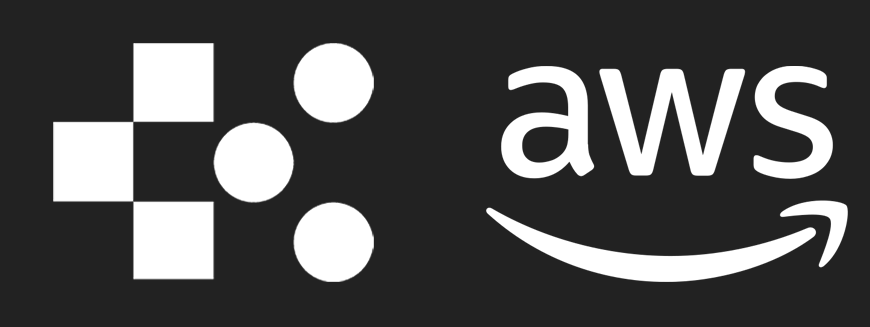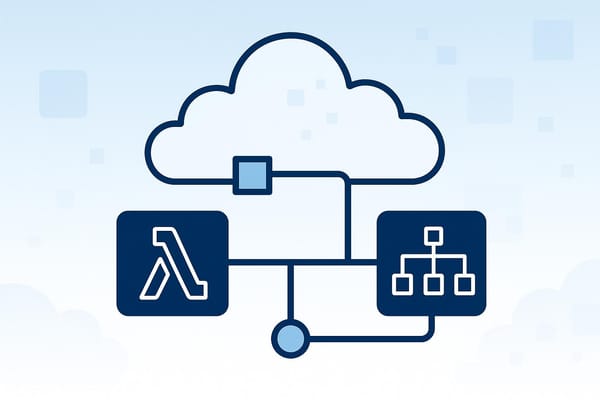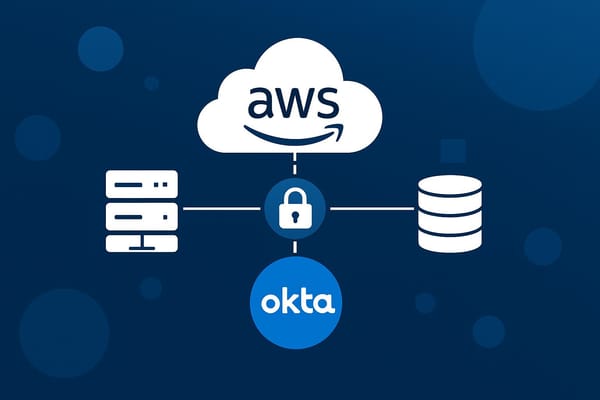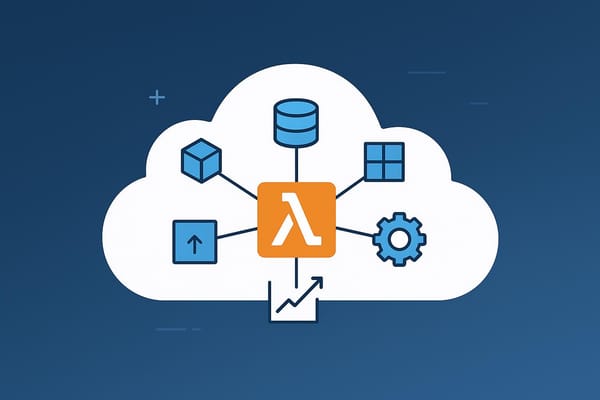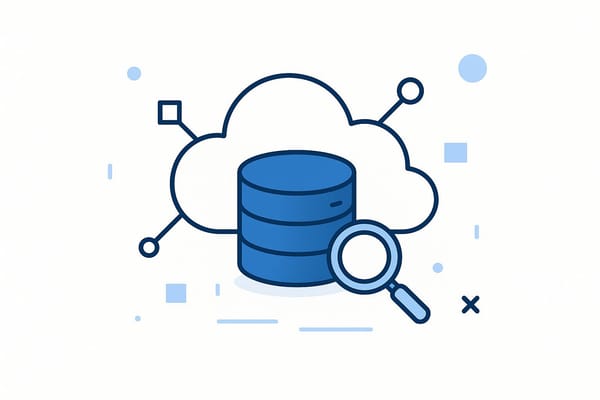How to Build Scalable AWS Multi-Account Structures
Learn how to efficiently build scalable AWS multi-account structures to enhance security, streamline compliance, and manage costs effectively.
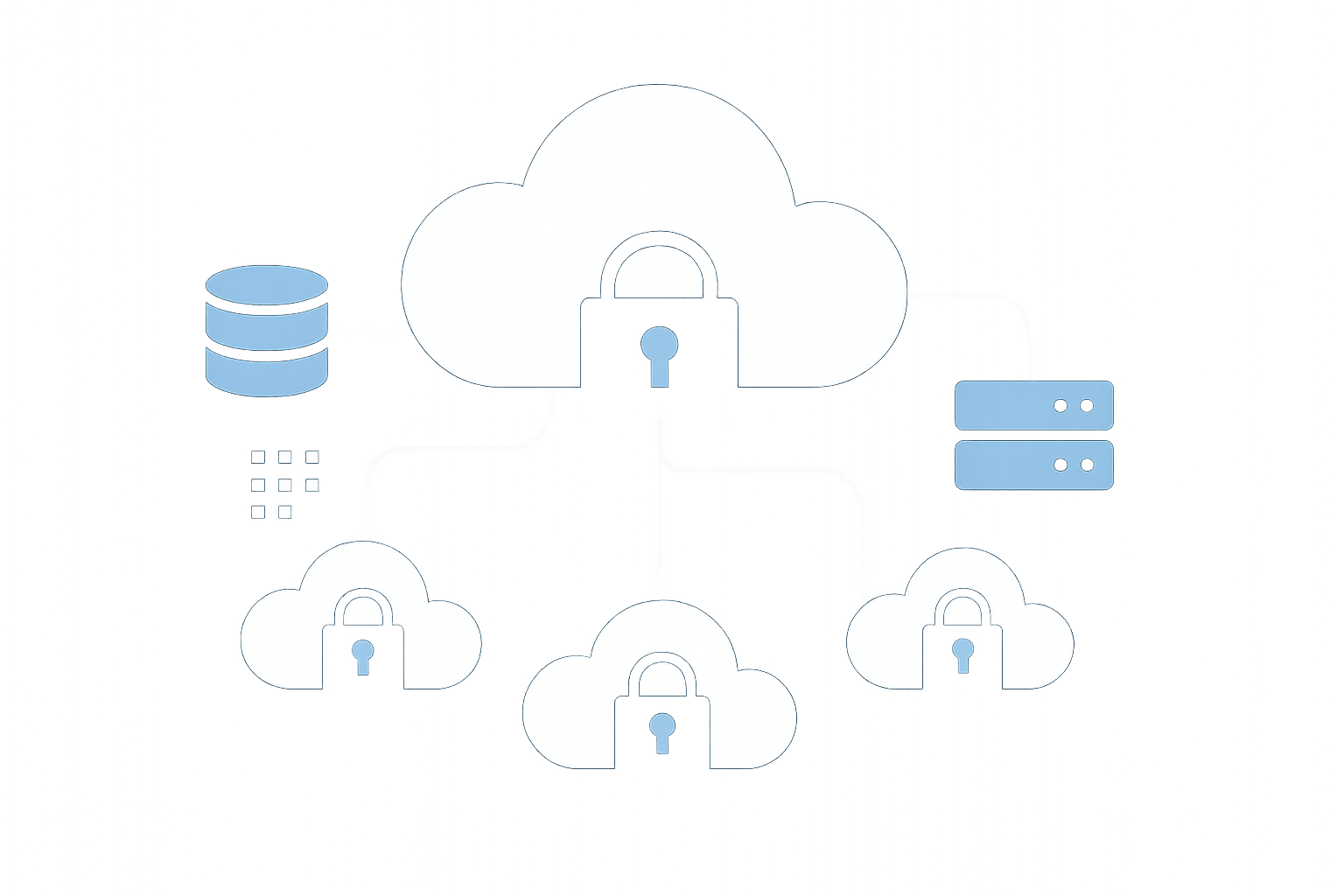
Managing everything in a single AWS account can quickly become overwhelming as your business grows. A multi-account structure helps you stay organised, improve security, and control costs. Here's what you need to know:
- Why it’s important: Separating workloads across accounts improves security, simplifies compliance (e.g., GDPR in the UK), and makes cost tracking easier.
- Key tools: AWS Organizations, Service Control Policies (SCPs), and IAM Identity Center help manage accounts, permissions, and user access efficiently.
- Planning your structure: Group accounts by function, department, or compliance needs. For example, create separate accounts for production, development, and security.
- Cost management: Use AWS Budgets, cost allocation tags, and consolidated billing to monitor and control expenses across accounts.
- Automation and governance: Tools like AWS Control Tower, CloudFormation, and Terraform simplify account provisioning, governance, and resource management.
How to Build AWS Multi-Account Infrastructure with Security and Speed
Planning and Designing an AWS Multi-Account Structure
When setting up a multi-account structure in AWS, it’s essential to map out your workloads and define clear boundaries for isolation. This ensures your accounts are organised in a way that supports both operational efficiency and security.
Defining Account Groupings
At the core of any multi-account structure is how you group your accounts. AWS suggests grouping based on function, department, or compliance needs, rather than simply following your company’s reporting hierarchy. This method creates logical divisions that make management simpler.
Start with a few key foundational accounts that every small or medium-sized business (SMB) will need. For instance, you should set up separate accounts for:
- Network infrastructure
- Security tools (e.g., Amazon GuardDuty, AWS Security Hub)
- Environment-specific workloads (production, pre-production, and development)
Grouping by environment is particularly effective for SMBs. Keeping production, pre-production, and development in separate accounts ensures that testing or development work doesn’t accidentally affect live systems. It also allows developers the freedom to experiment without risk. If your business has multiple departments or product lines, you might consider grouping by workload instead. This means each major application or service gets its own account, simplifying cost tracking and access control.
Once you’ve defined your accounts, the next step is to organise them into Organisational Units (OUs) for consistent governance.
Organisational Units (OUs): Structure and Best Practices
OUs help group related accounts so that governance policies can be applied consistently. It’s best to structure OUs around functions or shared controls.
Start with foundational OUs for Security and Infrastructure:
| Foundational OU | Description | Purpose |
|---|---|---|
| Security OU | Contains security accounts without application workloads | Centralised security tools, log aggregation, compliance monitoring |
| Infrastructure OU | Houses shared services like networking and identity resources | Network management, shared resources, operations tooling |
The Security OU should focus solely on security-related accounts and tools, avoiding any application workloads. Meanwhile, the Infrastructure OU manages shared services that other accounts depend on.
Beyond these foundational OUs, create workload-specific OUs for your business applications. You could even use nested OUs to separate environments within a workload. For example, a "Customer Portal" workload might have distinct accounts for production, pre-production, and development.
For SMBs in the UK subject to GDPR, establishing a Compliance OU can simplify managing accounts that handle personal data. This makes it easier to enforce data protection policies and prepare for audits.
Operational OUs also play a critical role. A Sandbox OU can give developers a safe space to explore new AWS services without risking production systems. Similarly, a Policy Staging OU allows you to test governance policies before rolling them out broadly.
Once your accounts and OUs are structured, it’s time to focus on managing costs effectively.
Cost Allocation and Budgeting
A well-designed multi-account structure makes cost management much clearer. By assigning individual billing to each account, you can easily track spending for specific projects, teams, or departments.
AWS Budgets is a powerful tool for setting spending limits on individual accounts or groups of accounts. For instance, you might allocate £500 per month for development accounts and £2,000 for production accounts. AWS Budgets can send alerts when spending approaches these limits, helping you avoid unexpected charges.
Cost allocation tags are another essential feature. Consistently tagging resources across accounts enables detailed cost tracking in AWS Cost Explorer. Tags like "Environment:Production" or "Department:Marketing" let you break down costs by project, team, or customer.
To encourage accountability, consider implementing a chargeback model where each department or project is responsible for its own AWS usage. Monthly reports showing team-specific spending can promote more mindful resource use, as teams become directly accountable for their cloud costs.
It’s also wise to establish cost governance early. Automate alerts for accounts that exceed their budgets, and require approval before launching high-cost resources such as large EC2 instances. This strikes a balance between controlling expenses and maintaining the flexibility that makes cloud computing so effective.
Taking the time to plan your account structure thoroughly will pay off in the long run. Think ahead about how your business might grow and ensure your setup can scale without requiring a major overhaul.
Implementing Governance, Security, and Compliance
Once your multi-account structure is set up and organised, the next step is to establish strong governance and security measures. These are key to ensuring your systems remain secure and meet compliance requirements over time.
Central Governance with AWS Organizations
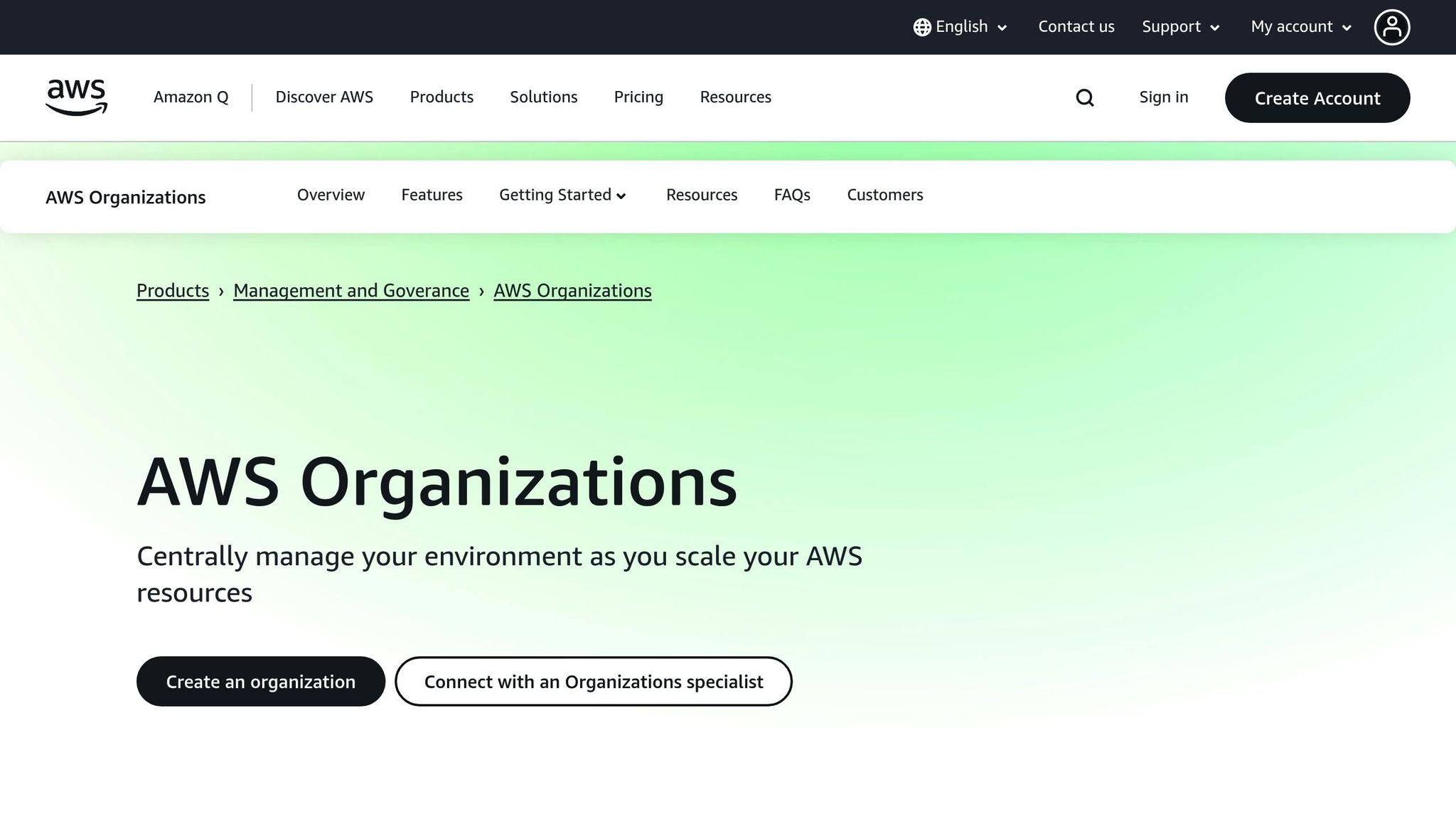
AWS Organizations is a powerful tool for managing multiple accounts from one central location. It allows you to create a hierarchy where a single management account oversees all member accounts. This setup supports workload isolation, centralised monitoring, and unified management of security policies.
Start by creating a management account using a group email and enabling multi-factor authentication (MFA) for the root user.
The value of AWS Organizations is amplified when paired with AWS Control Tower. This service automates the setup of your multi-account environment, embedding governance practices from the outset and saving you time.
For UK small and medium-sized businesses (SMBs), AWS Organizations simplifies compliance management. By applying consistent policies across all accounts, you can more easily demonstrate alignment with regulations like the GDPR.
Additionally, AWS CloudFormation StackSets integrates seamlessly with AWS Organizations, enabling you to deploy resources consistently across multiple accounts. This makes it easier to roll out security settings, compliance tools, or standardised infrastructure templates across your organisation.
Using Service Control Policies (SCPs)
Service Control Policies (SCPs) act as guardrails for your multi-account environment, defining the maximum permissions users and roles can have within member accounts. Unlike IAM policies, SCPs don’t grant permissions but instead limit what actions can be performed.
For UK businesses, SCPs are especially useful for maintaining data sovereignty and meeting regulatory requirements. For instance, you can create policies restricting AWS services to specific regions, ensuring sensitive data stays within the UK or EU. A common example is restricting services to the London (eu-west-2) and Ireland (eu-west-1) regions.
Start with SCPs that block unnecessary services. Test these policies in a non-production organisational unit (OU) to evaluate their impact. Use IAM’s service last accessed data to review usage patterns, and then gradually apply refined policies across your organisation.
Keep in mind that SCPs apply to all users and roles in attached accounts, including the root user. However, they don’t affect service-linked roles that AWS services require to function.
Identity and Access Management for SMBs
AWS IAM Identity Center (formerly AWS SSO) simplifies access management across multiple accounts, making it particularly beneficial for small IT teams. Instead of creating individual users in every account, Identity Center provides a single source of truth for user management and streamlines cross-account access.
The cornerstone of effective identity management is the use of permission sets - collections of permissions tailored to specific job functions. For example, you might define permission sets for roles like DevOps Engineers, Finance Teams, or Security Auditors.
Take a SaaS company as an example. It might use separate AWS accounts for development, staging, and production. Developers could have full access to development accounts but limited access to staging and production environments. By adopting IAM Identity Center with well-defined permission sets, the company can simplify onboarding, maintain consistent permissions, and improve security.
For UK SMBs, Identity Center also supports compliance efforts by integrating with existing identity providers like Azure Active Directory or Okta. This ensures alignment with your current user management processes and simplifies audit requirements.
Attribute-Based Access Control (ABAC) adds another layer of security by dynamically assigning access based on attributes like department, project, or clearance level. Regular access reviews, supported by tools like AWS CloudTrail and IAM Access Analyzer, ensure that permissions adhere to the principle of least privilege.
For businesses navigating UK data protection laws, AWS Audit Manager can be a game-changer. It provides prebuilt frameworks that map AWS resources to control requirements under regulations like the GDPR, automating evidence collection and simplifying compliance reporting.
Automation and Growth with Infrastructure as Code (IaC)
Infrastructure as Code (IaC) takes the principles of software development - versioning, testing, and consistent deployment - and applies them to your IT infrastructure. By treating your infrastructure like software, you can scale efficiently while reducing errors. With established multi-account governance in place, tools like AWS CloudFormation and Terraform can automate processes and simplify management across accounts.
Using AWS CloudFormation or Terraform
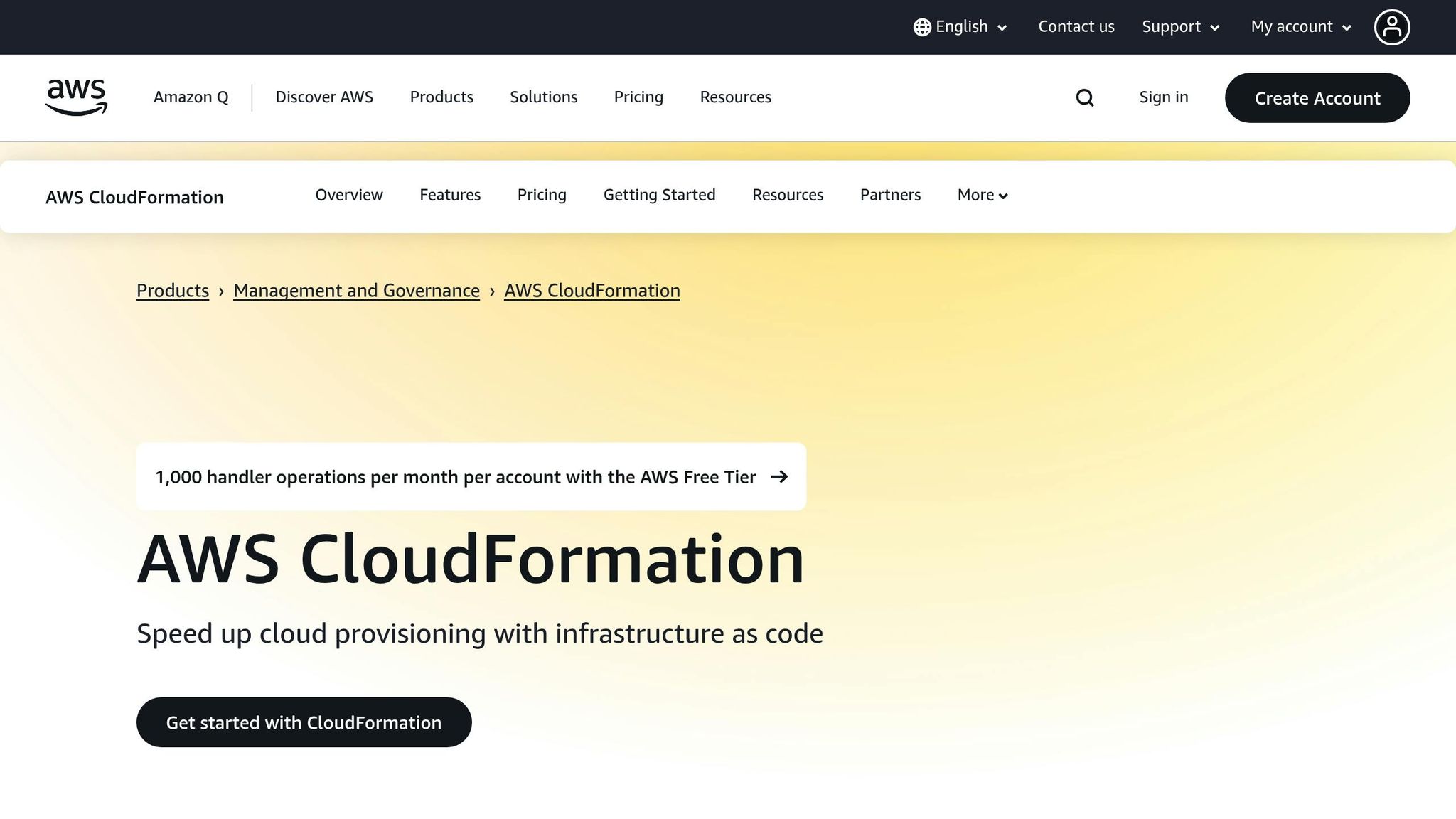
AWS CloudFormation and Terraform are two of the most popular options for automating multi-account environments.
- AWS CloudFormation: As a native AWS service, CloudFormation integrates seamlessly with other AWS tools. It allows you to model and provision AWS and third-party resources consistently. Using CloudFormation templates and StackSets, you can manage entire stacks across multiple AWS accounts and regions with a single operation. For best results, it’s recommended to use a dedicated management account for deploying StackSets. This separation helps maintain clarity between governance and operational tasks.
- Terraform: If your organisation needs a cloud-agnostic solution, Terraform is a strong choice. It uses declarative configuration files (HCL) to define infrastructure, making it ideal for managing resources across multiple cloud platforms or hybrid setups. For UK small and medium-sized businesses, Terraform’s Account Factory for Terraform (AFT) simplifies account provisioning, saving time and effort.
Standardising Templates for Consistency
As your business grows, ensuring all new AWS accounts follow the same security, compliance, and operational standards is crucial. A modular approach to infrastructure design can help achieve this. Break your setup into reusable components, such as networking modules, IAM roles, security groups, and monitoring configurations. Using Git for version control and automated testing ensures errors are caught early, before they reach production.
To maintain consistent security and service configurations, enforce policies as code. AWS CloudFormation StackSets can be used to deploy these policies across accounts, while continuous monitoring tools detect and correct any configuration drift.
Growing Efficiently as Your Business Expands
Scaling your infrastructure efficiently requires a balance of automation, governance, and cost management. By integrating IaC with CI/CD pipelines, you can streamline deployments and updates across environments. Reusing templates and modules not only saves time but also reduces the risk of errors. For automated account provisioning, AWS Control Tower ensures new accounts inherit your established governance framework.
Implement consistent resource tagging in your templates to improve cost allocation, compliance tracking, and resource management. Tags can include details like cost centre, environment, project, and owner information. As your infrastructure evolves, you might move from template-driven IaC to code-defined applications using tools like the AWS Cloud Development Kit (AWS CDK), which offers greater flexibility.
Planning for capacity in your templates ensures new accounts are equipped to handle workloads without over-provisioning. Tools like AWS Cost Explorer can help monitor spending and prevent unexpected charges, keeping costs under control as you grow.
For more tips on managing costs and optimising your AWS environment, check out AWS Optimization Tips, Costs & Best Practices for Small and Medium sized businesses.
Continuous Improvement and Best Practices
Managing scalable multi-account structures isn't a one-and-done task. It demands constant monitoring, fine-tuning, and adjustments. Without regular attention, even the most carefully planned setup can become inefficient, expensive, or vulnerable over time.
Monitoring and Auditing Across Accounts
When it comes to monitoring across accounts, AWS CloudTrail and CloudWatch are your go-to tools. CloudTrail keeps track of API activity and user actions, essentially answering the "who did what" question. Meanwhile, CloudWatch handles system performance by collecting metrics, logs, and operational data.
For SMBs juggling multiple accounts, centralised logging can be a game-changer. Using AWS Organizations trails, you can consolidate logs from all accounts into a single S3 bucket. This not only simplifies management but also trims costs compared to maintaining separate trails for each account. Plus, CloudTrail offers a 90-day history of management events per AWS Region for free via the console.
As your infrastructure grows, cross-account observability becomes vital. CloudWatch's cross-account observability feature allows you to assign one or more AWS accounts as monitoring hubs. These hubs can then link to multiple source accounts, making it easier to monitor and troubleshoot applications across regions.
When setting up monitoring, focus on tracking what truly matters. For instance, enable data logging for high-risk resources, such as S3 buckets containing sensitive information or critical Lambda functions. Custom trails and cost-effective storage classes can help with long-term log retention.
For querying logs, CloudTrail Lake provides a streamlined solution. It costs £0.60 per GB for ingestion and £0.004 per GB scanned for queries, offering an alternative to managing separate S3 buckets and Athena tables.
Cost Reduction for SMBs
Keeping costs under control across multiple accounts requires both strategic and tactical measures. Start by implementing Service Control Policies (SCPs), enforcing mandatory tagging, and automating cost reports to reduce unnecessary expenses.
Consolidated billing through AWS Organizations offers a clear overview of your cloud costs, but real savings come from smart resource management. For example, separating production and development accounts helps track spending more precisely. A solid tagging policy can further organise and segment resources effectively. Tags like "expiration" or "deleteafter" can ensure periodic reviews of resources. For deeper insights, use AWS Cost and Usage Reports and analyse the data with tools like Amazon Athena, Amazon Redshift, or Amazon QuickSight.
To maximise savings, coordinate Reserved Instances and Savings Plans across accounts. Make sure these purchases are tagged and linked to specific business purposes. SCPs can also restrict regions or instance types, ensuring better utilisation of these plans.
Automating cost-saving measures can make a big difference. For instance:
- Schedule off times for non-production instances.
- Delete outdated snapshots.
- Move rarely accessed data to cheaper storage tiers.
- Use spot instances for flexible workloads.
- Implement Auto Scaling to match demand.
Optimising how you send data to CloudWatch can also save money. Use metric math alarms to aggregate data before sending it, or consider metric streams to push data in near real-time to third-party systems at a lower cost.
For more UK-specific cost-saving insights, check out AWS Optimization Tips, Costs & Best Practices for Small and Medium-Sized Businesses.
Regular Reviews and Updates
While real-time monitoring and cost controls are essential, periodic reviews ensure your multi-account structure stays aligned with your business needs. Set up a regular review cycle to evaluate account organisation, policies, and governance frameworks. For example:
- Conduct monthly audits to review SCPs and Savings Plan coverage.
- Perform quarterly reviews to assess your account structure and organisational unit (OU) design.
Automation can help maintain consistency as you scale. Tools like AWS Control Tower or custom account factory setups using AWS Organizations, Lambda, and CloudFormation can standardise account creation and prevent configuration drift.
Centralised logging is another must-have. Use AWS CloudTrail, CloudWatch, AWS Config, and Security Hub to create a unified view of your infrastructure. This approach simplifies troubleshooting and strengthens security oversight.
Automate policy enforcement wherever possible. For instance, SCPs can restrict actions like disabling logging or deleting backups. Applying these policies at the OU level is often more efficient than managing them for individual accounts.
Finally, keep Identity and Access Management (IAM) under close review. Use federated access and AWS IAM Identity Center to manage user access across accounts from a single location. Regularly check permissions and access patterns to ensure they align with your current security and business needs.
Don’t forget to monitor long-term trends in your Reserved Instances and Savings Plans. Are they delivering the value you expected? If not, adjust your strategy to reflect changing usage patterns and business goals.
Conclusion
Setting up scalable AWS multi-account structures goes beyond just technical know-how - it's a strategic move that can reshape how your small or medium-sized business operates in the cloud. When done right, this framework becomes a powerful tool for growth, delivering both efficiency and security.
With a well-organised approach, you can achieve workload isolation to safeguard production systems, streamline compliance through centralised governance, and improve cost transparency. For example, isolating development environments ensures experimental changes don’t interfere with production, while centralised policies make it easier for UK businesses to meet regulatory requirements.
At the heart of this strategy is AWS Organizations, which simplifies managing multiple accounts. Features like Service Control Policies, IAM Identity Center, and consistent tagging practices allow you to scale operations without losing control over costs or security.
Start with a Master Payer Account, establish clear tagging protocols, and enable Cost Allocation Tags right from the beginning. As your business grows, you can easily add accounts for new projects, teams, or environments without disrupting your existing setup. This flexibility ensures your cloud infrastructure evolves alongside your business needs.
To keep everything running smoothly, regular AWS Well-Architected Reviews, automated tools like Lambda functions, and continuous monitoring are essential. These practices ensure your structure stays aligned with your goals, while also paving the way for ongoing improvements. The upfront effort in planning and governance transforms what could be a complex challenge into a streamlined system that supports your ambitions.
For UK SMBs ready to optimise their AWS usage, the resources and best practices are already at your fingertips. Following this structured approach ensures your multi-account setup becomes a reliable foundation for long-term cloud growth.
For more tailored advice on AWS cost management, cloud architecture, and optimisation for small and medium-sized businesses, check out AWS Optimization Tips, Costs & Best Practices for Small and Medium Sized Businesses.
FAQs
How can organising AWS accounts by function, department, or compliance needs enhance security and cost efficiency?
Organising AWS accounts based on function, department, or compliance requirements can greatly improve security. By isolating workloads, you can apply tailored security measures and restrict access to sensitive data in line with specific needs. This approach helps minimise risks and ensures critical resources are better protected.
It also supports cost management by enabling centralised billing and providing clearer cost allocation for teams or projects. This makes tracking expenses much simpler. With this structured setup, organisations can maintain strong governance, scale efficiently, and keep budgets and compliance under control.
What are the advantages of using AWS Organisations and Service Control Policies (SCPs) for managing multiple AWS accounts?
Using AWS Organisations and Service Control Policies (SCPs) offers a practical way to manage a multi-account setup with ease. SCPs provide a way to set centralised limits on the permissions accounts can use, helping to maintain strong security measures and meet compliance requirements. By restricting access to sensitive resources, they minimise the chances of unauthorised actions or security incidents.
AWS Organisations also make things simpler by allowing you to create new accounts programmatically, manage user permissions efficiently, and organise workloads based on specific business needs. These capabilities support scalability, help control costs, and improve operational flexibility - benefits that are especially useful for small and medium-sized businesses aiming to make the most of their AWS environment.
How do tools like AWS CloudFormation and Terraform improve scalability and governance in AWS multi-account setups?
Infrastructure as Code (IaC) tools like AWS CloudFormation and Terraform are essential for managing scalability and control in AWS multi-account setups. With CloudFormation, particularly its StackSets feature, you can automate and centrally manage deployments across various accounts and regions. This ensures consistent configurations while cutting down on operational workload. Similarly, Terraform simplifies handling multiple accounts by automating provisioning, enforcing policies, and deploying infrastructure at scale.
These tools enable standardised and repeatable processes, reducing manual errors, improving control, and helping businesses expand their AWS environments with ease. For small and medium-sized businesses, using IaC tools means smoother multi-account management and stronger oversight of their cloud infrastructure.
